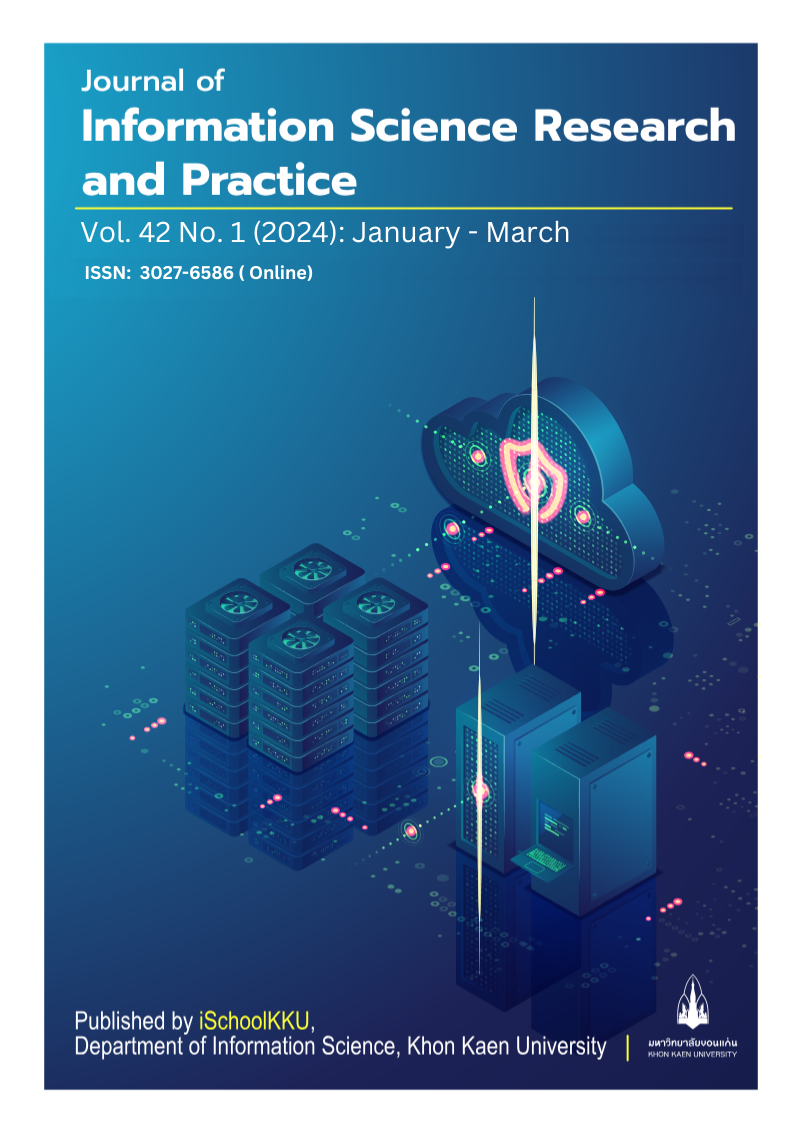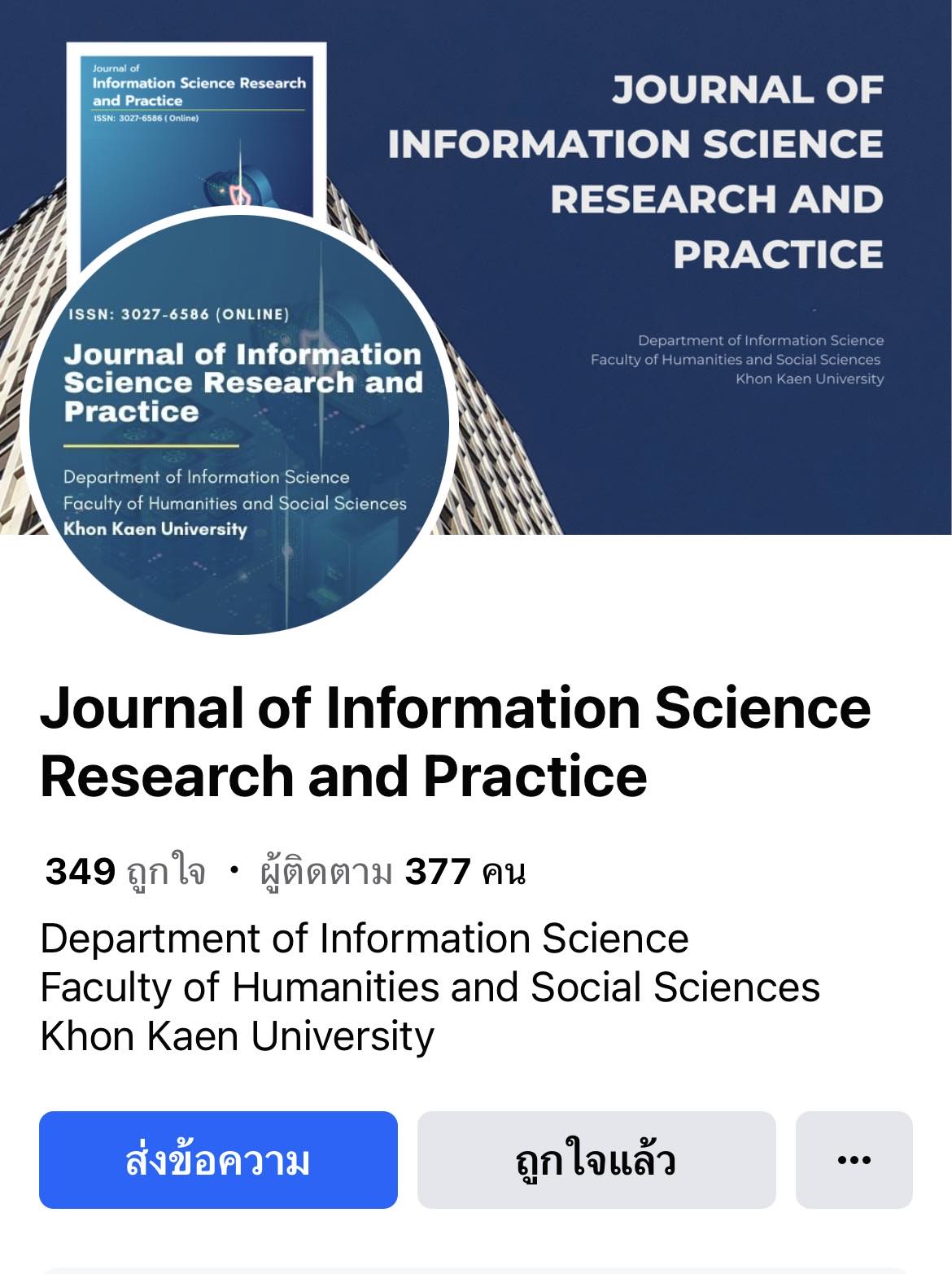A Review of the Effectiveness of Information Literacy Instruction among Nursing Students
DOI:
https://doi.org/10.14456/jiskku.2024.8Keywords:
Information Literacy, Nursing Student, Instruction MethodAbstract
Information literacy is an essential skill for nurses to find evidence-based practice to improve nursing care. Many nursing schools are teaching information literacy to imbed this skill to their student. There is no evidence that showed the best way to teach information literacy. The purpose of this study was to review effective instruction to teach information literacy in undergraduate nursing students for the past 10 years by using PICO to define keywords. The included research must provide instruction methods in nursing students, measurement of actual information literacy and student’s information literacy must improve after enrolled. Searching results found 9 studies that met criteria. All matched evidence was assessed for validity, reliability, and feasibility for using the results of the study as a guideline for information literacy instruction in nursing students. The reviews found that most of them were collaborative instruction between nursing faculty and librarian. All of them were provided learning tasks, activities, and assignments to students. Some of them provided assistant and feedback for students’ assignments. Students' information literacy was improved after teaching. A well-designed instruction method with appropriate learning tasks and tools is an effective way to teach information literacy. The findings from this review can be helpful for nursing education as a guideline for information literacy instruction. Nurse educators should select and design appropriate learning tools and activities to practice. Provide assistance and feedback for students’ assignments to help students gain more understanding and information literacy ability.
Downloads
References
Barnard, A., Nash, R., & O’Brien, M. (2005). Information literacy: Developing lifelong skills through nursing education. Journal of Nursing Education, 44(11), 505–510. https://doi.org/10.3928/01484834-20051101-06
Brettle, A., & Raynor, M. (2013). Developing information literacy skills in pre-registration nurses: An experimental study of teaching methods. Nurse Education Today, 33(2), 103–109. https://doi.org/10.1016/j.nedt.2011.12.003
Barends, E., Rousseau, D., & Briner, R. (2017). CEBMa’s guideline for critically appraised topics in management and organizations. Amsterdam: the Center for Evidence-Based Management.
Doyle, C. S. (1992). Outcome Measures for Information Literacy within the National Education Goals of 1990. Final Report to National Forum on Information Literacy. Summary of Findings. USA: Northern Arizona University.
Farrell, A., Goosney, J., & Hutchens, K. (2013). Evaluation of the Effectiveness of Course Integrated Library Instruction in an Undergraduate Nursing Program. The Journal of the Canadian Health Libraries Association, 34(3), 164–175. https://doi.org/10.5596/c13-061
Greiner, A.C., & Knebel, E. (Eds.). (2003). Health professions education: A bridge to quality. Washington, DC: Academies Press (US).
Jacobsen, H. E., & Andenæs, R. (2011). Third year nursing students’ understanding of how to find and evaluate information from bibliographic databases and Internet sites. Nurse Education Today, 31(8), 898–903. https://doi.org/10.1016/j.nedt.2011.01.003
Krobudom, S., & Somprasertsri, G. (2018). The development of information literacy skill of nursing students of the Faculty of Nursing, Mahasarakram University. Journal of Information Sciences, 36(1), 128-45.
Lalor, J. G., Clarke, M., & Sheaf, G. (2012). An evaluation of the effectiveness of information literacy training for undergraduate midwives to improve their ability to access evidence for practice. Nurse Education in Practice, 12(5), 269–272. https://doi.org/10.1016/j.nepr.2012.06.005
Melnyk, B.M., & Fineout-Overholt, E. (2011). Evidence-based practice in nursing & healthcare: A guide to best practice. (2nd ed.). Philadelphia: Wolters Kluwer / Lippincott Williams & Wilkins.
Melnyk, B. M., Fineout-Overholt, E., Feinstein, N. F., Sadler, L. S., & Green-Hernandez, C. (2008). Nurse Practitioner Educators’ Perceived Knowledge, Beliefs, and Teaching Strategies Regarding Evidence-Based Practice: Implications for Accelerating the Integration of Evidence-Based Practice Into Graduate Programs. Journal of Professional Nursing, 24(1), 7–13. https://doi.org/10.1016/j.profnurs.2007.06.023
Nordsteien, A., Horntvedt, M.-E. T., & Syse, J. (2017). Use of research in undergraduate nursing students’ theses: A mixed methods study. Nurse Education Today, 56, 23–28. https://doi.org/10.1016/j.nedt.2017.06.001
Rapchak, M. E., Nolfi, D. A., Turk, M. T., Marra, L., & O’Neil, C. K. (2018). Implementing an interprofessional information literacy course: impact on student abilities and attitudes. Journal of the Medical Library Association, 106(4), 464–470. https://doi.org/10.5195/jmla.2018.455
Russell, F., Rawson, C., Freestone, C., Currie, M., & Kelly, B. (2018). Parallel Lines: A Mixed Methods Impact Analysis of Co-Curricular Digital Literacy Online Modules on Student Results in First-Year Nursing. College & Research Libraries, 79(7), 948–971. https://doi.org/10.5860/crl.79.7.948
Shamsaee, M., Mangolian shahrbabaki, P., Ahmadian, L., Farokhzadian, J., & Fatehi, F. (2021). Assessing the effect of virtual education on information literacy competency for evidence-based practice among the undergraduate nursing students. BMC Medical Informatics and Decision Making, 21(1), 1–11. https://doi.org/10.1186/s12911-021-01418-9
Whalen, K. J., & Zentz, S. E. (2015). Teaching Systematic Searching in a Baccalaureate Nursing Research Course. Worldviews on Evidence-Based Nursing, 12(4), 246–248. https://doi.org/10.1111/wvn.12090
Zurkowski, P.G. (1974). The information service environment relationships and priorities. Washington, DC: National Commission on Libraries and Information Sciences.








